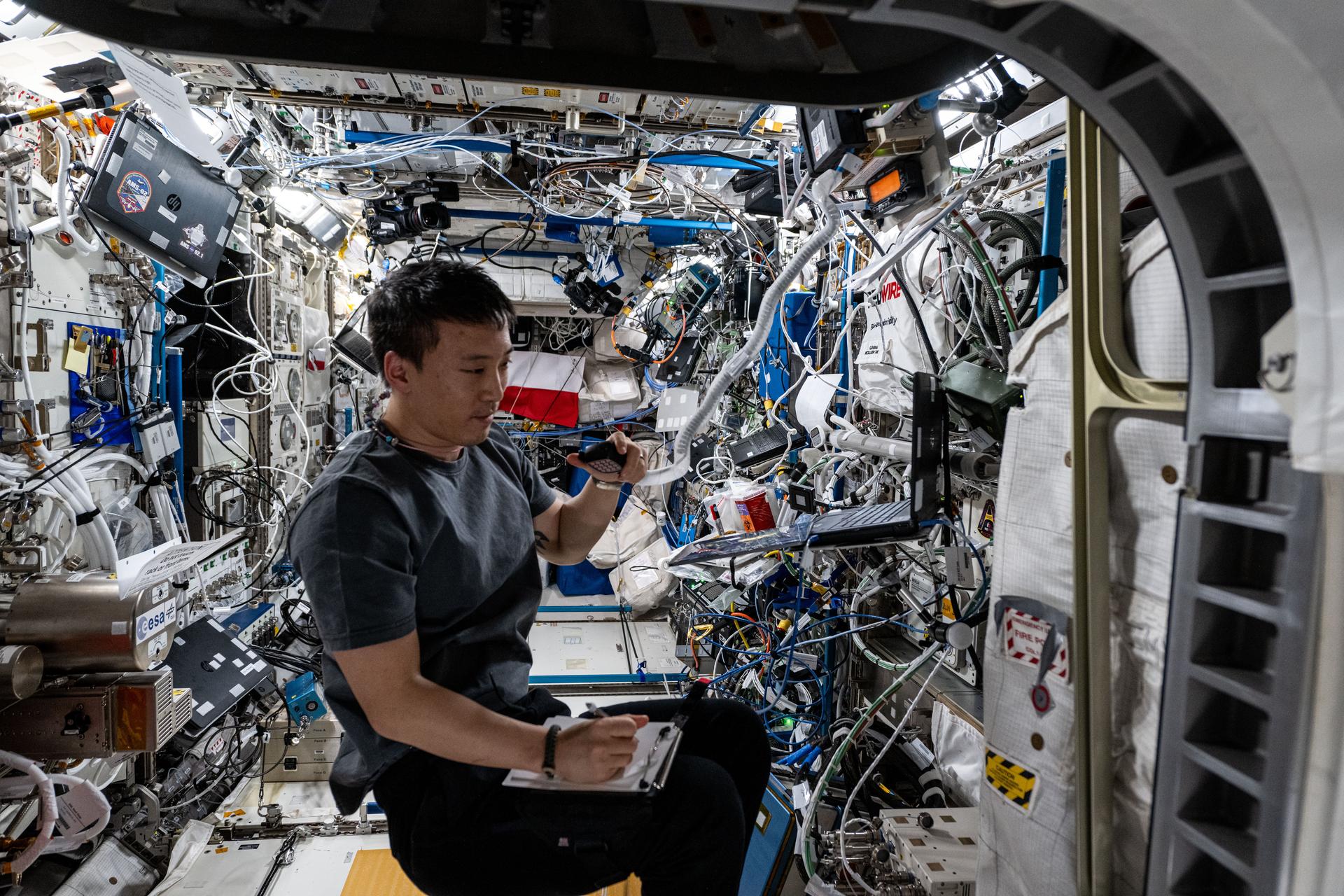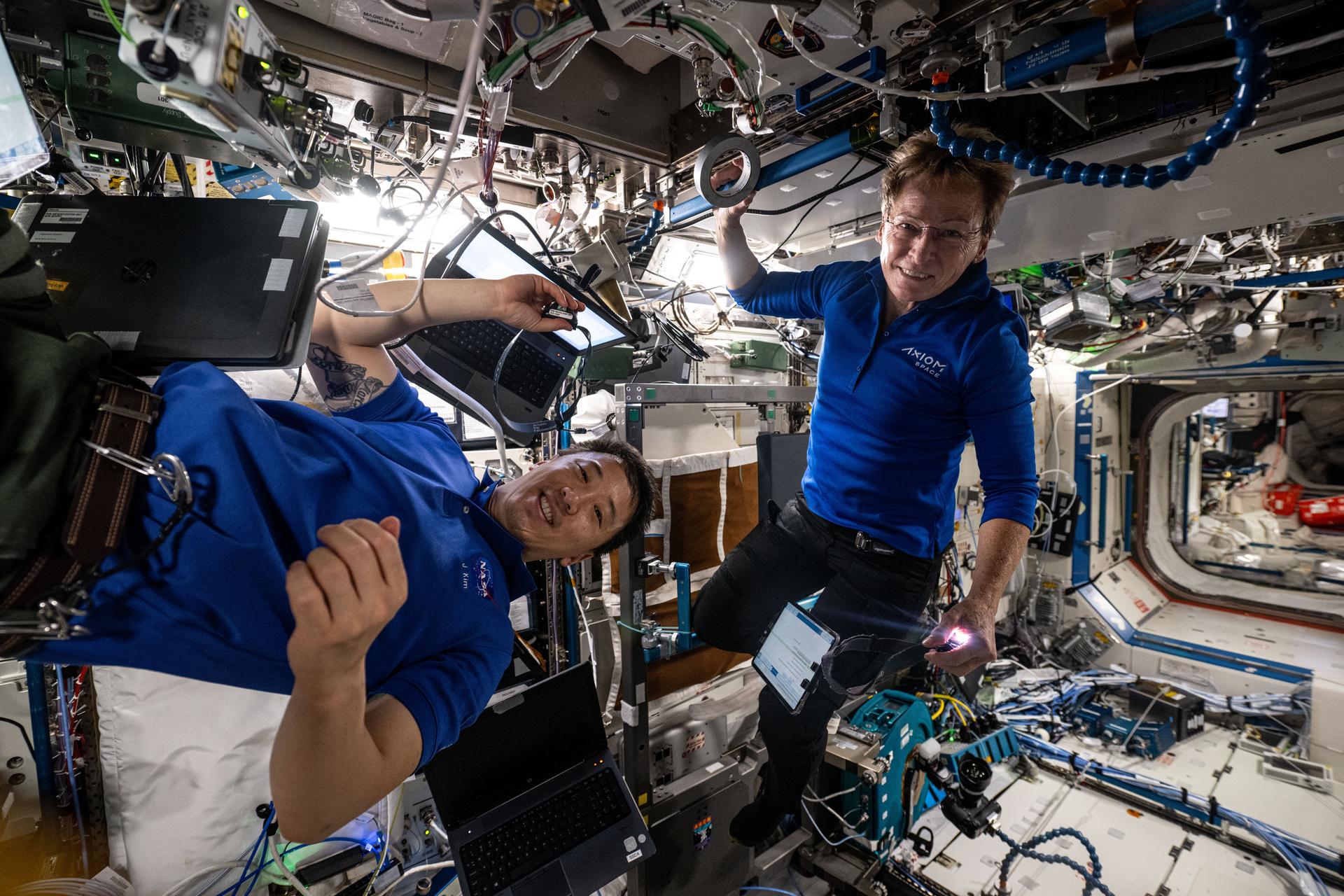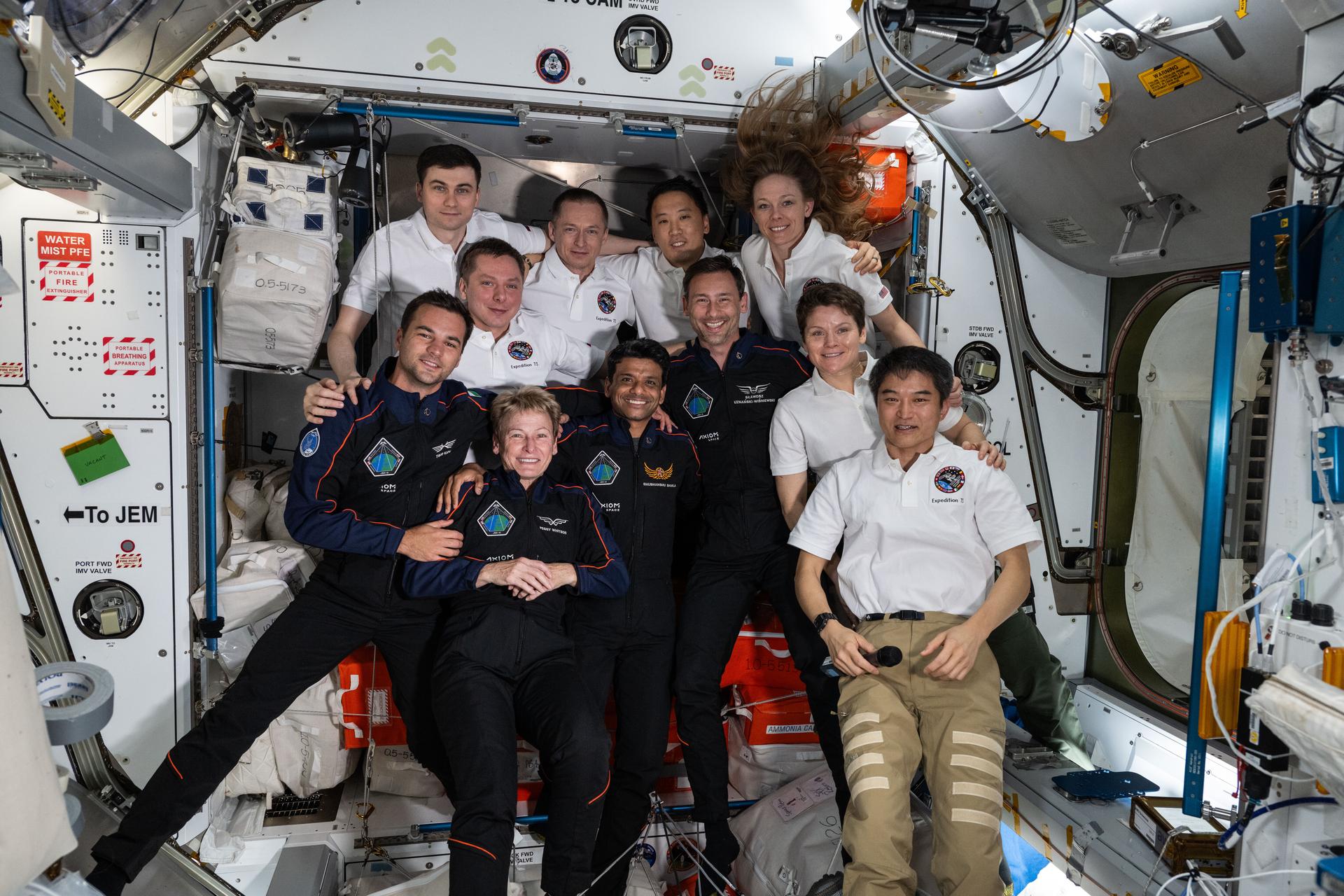Muscle and Exercise Studies to Maintain Crew Health in Space
Maintaining muscles and monitoring astronaut health in space were the top research subjects aboard the International Space Station on Wednesday. The Expedition 73 crew also replaced critical life support hardware and serviced a variety of experimental gear.
The lack of gravity weighing down on a human living in space contributes to muscle loss since it takes much less effort to move around in weightlessness. Spaceflight crews exercise daily for two hours to counteract space-caused muscle atrophy and bone loss to stay healthy in microgravity and remain in shape for the eventual return to Earth.
Scientists are studying electrical muscle stimulation in combination with exercising in space to improve muscle function, reduce workout times, and design lighter exercise equipment. NASA Flight Engineers Nichole Ayers and Jonny Kim joined each other in the Columbus laboratory module for the muscle study that may benefit future long-duration space flights as well as patients on Earth with mobility issues. Ayers wore electrodes that sent electrical signals to her legs as Kim operated the biomedical equipment that also recorded how her muscles responded.
Next, Ayers removed the electrodes then wore a sensor-packed headband and vest collecting her heart and breathing rate as she worked out on the advanced resistive exercise device that mimics free weights on Earth and then pedaled on an exercise cycle. Researchers will use the health data to continuously adjust crew exercise plans and improve aerobic and cardiovascular conditioning in microgravity.
Ayers and Kim later assisted NASA Flight Engineer Anne McClain as she replaced a catalytic reactor in the Tranquility module. The catalytic reactor introduces oxygen into the station’s water processor assembly and oxidizes organic material in the wastewater. Station Commander Takuya Onishi from JAXA (Japan Aerospace Exploration Agency) helped the trio conclude the maintenance work as he reinstalled hardware removed in Tranquility so the crew could access the advanced life support components.
Onishi began his day in the Kibo laboratory module troubleshooting and inspecting combustion research hardware in the Multipurpose Small Payload Rack. Onishi then replaced a device, the Microgravity Measurement Apparatus, that measures the vibrations Kibo experiences due to astronaut activities and spacecraft dockings that may affect sensitive science experiments.
Roscosmos cosmonauts Sergey Ryzhikov and Kirill Peskov also participated in an exercise study as they took turns jogging on the Zvezda service module’s treadmill for a fitness evaluation. Doctors will use the data to determine a crew member’s energy requirements to stay fit in space and ensure readiness for strenuous activities such as spacewalks and the return to Earth’s gravity. Roscosmos Flight Engineer Alexey Zubritskiy started his shift cleaning ventilation systems and smoke detectors. He then trained to perform medical procedures on the orbital outpost including eye checks, needle injections, injury treatments, and more.
The Progress 91 cargo craft docked to the rear port of Zvezda fired its engines for nearly 12 minutes on Wednesday. The reboost lifts the space station’s orbit to the correct altitude for the approach and docking of the Progress 93 cargo craft planned for September.
Learn more about station activities by following the space station blog, @space_station on X, as well as the ISS Facebook and ISS Instagram accounts.
Get the latest from NASA delivered every week. Subscribe here.
Powered by WPeMatico
Mark A. Garcia








